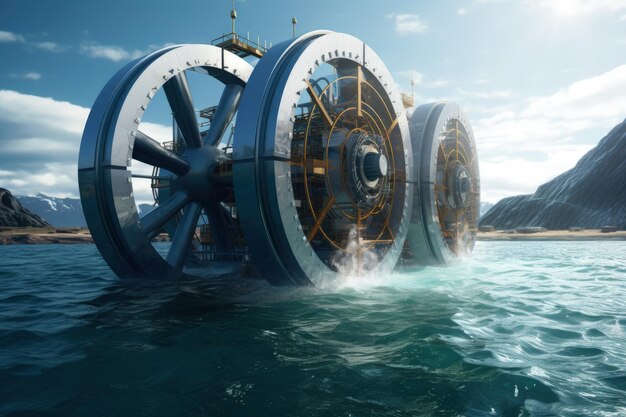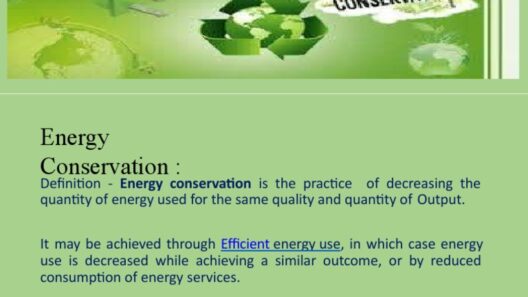Tidal energy, a renewable and potent source of power, arises from the gravitational forces exerted by the moon and the sun on Earth’s oceans. This phenomenon creates tidal movements that can be harnessed to generate electricity, offering a sustainable alternative to fossil fuels. Given the escalating concerns surrounding climate change and the dire need for cleaner energy sources, the quest to conserve and strategically harness tidal energy has become imperative.
The fascination with tidal energy is manifold, rooted in both its environmental implications and its potential for innovation. The rhythmic ebb and flow of tides is not merely a natural occurrence; it embodies a predictable energy source that remains largely untapped. Unlike solar or wind energy, which can be intermittent, tidal cycles are consistent and reliable. This reliability forms a compelling argument for investing in tidal energy technologies, despite the challenges and costs associated with its development.
To effectively conserve tidal energy, it is essential to implement robust, sustainable practices. The initial step involves understanding the ecological impact of tidal energy systems. Marine ecosystems are delicate; thus, any initiative to harness tidal energy must prioritize their preservation. Careful site selection for tidal energy projects is crucial. Locations should be chosen based on their minimal impact on marine life and habitats. This necessitates comprehensive environmental assessments that evaluate potential consequences on biodiversity, water quality, and local fisheries.
Innovative technology plays a pivotal role in conserving tidal energy. Traditional tidal turbines, though effective, often disrupt aquatic life. In contrast, more recent advancements include underwater turbines and tidal stream generators that are designed to minimize ecological disturbance. These technologies can be installed subtly beneath the water’s surface, allowing for energy extraction without affecting marine organisms or their habitats significantly. The development of bio-inspired designs, emulating natural forms such as fish and marine plants, could further enhance turbine efficiency while safeguarding marine ecosystems.
Another avenue for maximizing the efficiency of tidal energy systems lies in hybrid setups. Combining tidal energy with other renewable sources, such as wind and solar power, can create a more stable and predictable energy output. This multifaceted approach not only bolsters the overall energy grid but also mitigates risks associated with reliance on a singular energy source. The integration of various technologies invites a broader spectrum of conservation practices, amplifying the potential for sustainable energy generation.
The economic aspect of tidal energy conservation cannot be overlooked. While initial costs for establishing tidal energy systems can be high, the long-term financial benefits are significant. Savings arise from reduced operational costs, given that tidal energy is abundant and inexhaustible. This makes it an attractive investment for governments and private enterprises alike. Implementing financing models that support research and deployment of tidal technologies can further stimulate the industry, driving advancements that make tidal energy more accessible and cost-effective.
Public acceptance and community engagement also play pivotal roles in the successful implementation of tidal energy projects. Building awareness and understanding of the benefits of tidal energy is essential. Educational programs that elucidate how tidal energy serves both environmental and economic interests can foster community support. Engaging local stakeholders ensures that projects align with community needs and values, thus reducing opposition and facilitating smoother project development. Moreover, local communities can contribute to monitoring the impacts of tidal energy systems, enhancing conservation efforts through active participation and stewardship.
Regulation and policy formulation are fundamental to establishing a framework that encourages responsible tidal energy development. Governments around the world must create policies that incentivize the use of renewable energy sources while enforcing stringent guidelines that protect marine ecosystems. Establishing clear regulatory pathways can provide the stability that investors and developers seek, fostering innovation within the tidal energy sector. International cooperation can also amplify these efforts, as many tidal energy resources are located in international waters, necessitating collaborative management strategies.
Finally, encouraging research and development is crucial for the future of tidal energy conservation. Ongoing studies into tidal energy’s efficiency and ecological impact can lead to groundbreaking advancements in technology and methodology. Institutions, universities, and think tanks should collaborate to explore novel approaches to harnessing tidal energy while prioritizing ecological balance. This should include examining the potential of new materials that can enhance turbine durability and efficiency or the development of predictive models that accurately forecast tidal patterns, maximizing energy output.
In conclusion, conserving tidal energy is not merely a technical challenge but a multifaceted endeavor that encompasses ecological stewardship, technological innovation, community engagement, regulatory frameworks, and continuous research. By embracing these strategies, society can capitalize on the abundant potential that tidal energy offers, ensuring it contributes positively to combating climate change. As we delve deeper into the mysteries of our oceans, it becomes evident that the heart of a sustainable energy future lies beneath the waves, pulsing in rhythm with the tides.






